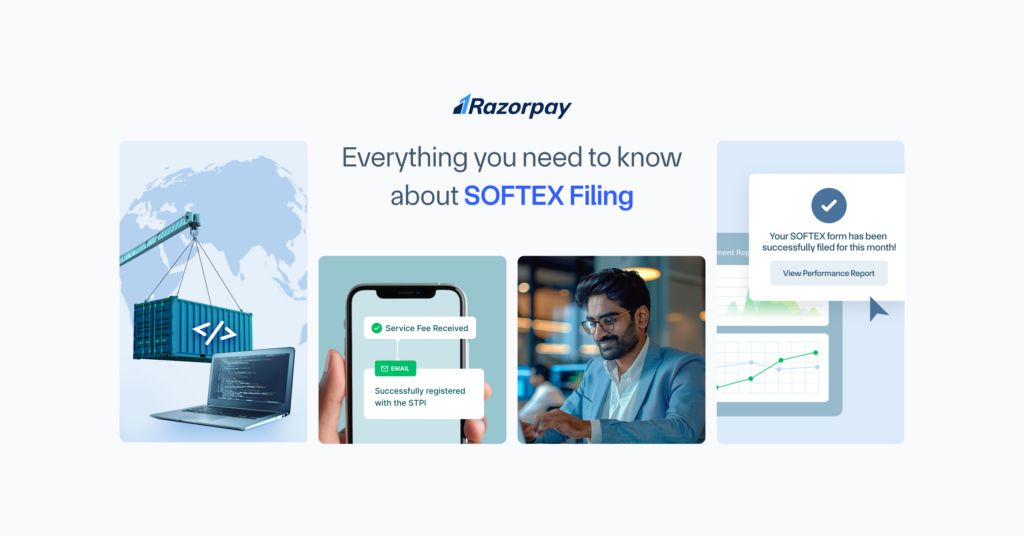Imagine you’ve just closed a deal to export your latest software to a client in Europe. Exciting, right? But wait, there’s a lot of paperwork to tackle. That’s where SOFTEX Filing in India comes in. It’s a crucial step for smooth and legal software exports. In this blog, we’ll break down what SOFTEX Filing is, why it matters, how to do it, and some handy tips to keep you compliant. Let’s get your software business flying across international borders!
What is SOFTEX Filing?
SOFTEX Filing is a mandatory regulatory requirement for companies in India that export software services or products. Issued by the Reserve Bank of India (RBI), the SOFTEX Form is used to declare the export of software, whether through physical media or over the Internet. This filing ensures that all software exports are accounted for and that the foreign exchange inflows are tracked and regulated. The SOFTEX form includes information such as:
- Exporter Details: Name, address, and other relevant particulars.
- Software Details: Description of the software exported.
- Invoice Details: Value of the software exported.
- Declaration: Certifying that the software was developed or customized by the exporter and exported in accordance with the prevailing laws.
What is the Importance of SOFTEX Filing?
- Regulatory Compliance
SOFTEX Filing helps businesses comply with the Foreign Exchange Management Act (FEMA), 1999. It ensures that all foreign currency earnings from software exports are reported to the RBI.
- Taxation and Auditing
Proper filing aids in accurate tax assessments and audits. It helps the government keep track of the revenue generated from software exports, which can impact taxation policies and decisions.
- Business Credibility
Regular and accurate SOFTEX Filings enhance a company’s credibility with financial institutions, investors, and other stakeholders. It demonstrates transparency and adherence to statutory requirements.
Non-filing or late filing of SOFTEX forms can attract penalties as per RBI guidelines. Penalties may include fines or other punitive actions. It’s essential for exporters to adhere to the filing deadlines to avoid such penalties and maintain compliance with regulatory requirements.
What are the Steps involved in the SOFTEX Filing Process?
- Registration with STPI: Businesses must register with the Software Technology Parks of India (STPI) to obtain the necessary approvals for exporting software.
- Preparation of SOFTEX Forms: For each software export transaction, the company must prepare a SOFTEX Form. This SOFTEX form includes details such as the nature of the software exported, the value of the export, and the foreign exchange earned.
- Submission to STPI: The prepared SOFTEX Forms, along with supporting documents like invoices and agreements, must be submitted to the relevant STPI authority. This submission is typically done every month.
- Certification: The STPI authority reviews the submitted forms and certifies them if all details are accurate and complete. This certification is crucial as it validates the export transaction.
- Submission to Authorized Dealer Bank: After certification, the SOFTEX Forms must be submitted to the company’s authorized dealer bank (the bank handling foreign exchange transactions). The bank will then forward these forms to the RBI.
How to File SOFTEX Online?
- Register with the STPI portal for SOFTEX filing.
- Login to the portal using the provided credentials.
- Enter all required details accurately in the online SOFTEX form.
- Upload necessary documents such as invoices.
- Review the information provided and submit the form.
- Upon successful submission, an acknowledgment will be generated.
What are Some Tips for Effective SOFTEX Filing?
- Timely Filing: Ensure that all SOFTEX Forms are prepared and submitted promptly. Delays in filing can lead to penalties and compliance issues.
- Accurate Documentation: Maintain accurate and detailed records of all software export transactions. Proper documentation supports the details provided in the SOFTEX Forms and aids in smooth certification and auditing processes.
- Regular Audits: Conduct regular internal audits to verify the accuracy of your SOFTEX Filings. This proactive approach can help identify and rectify any discrepancies early.
- Professional Assistance: Consider engaging professional consultants or services specializing in SOFTEX Filing. Their expertise can simplify the process and ensure accuracy.
Conclusion
What if we tell you there’s an easier way for SOFTEX Filing?
Well, for IT exporters, Razorpay SOFTEX Filing handles all your compliance needs effortlessly. Focus on your business while we take care of the paperwork.
Curious? Sign up now and discover how our solution can save you time and money!



